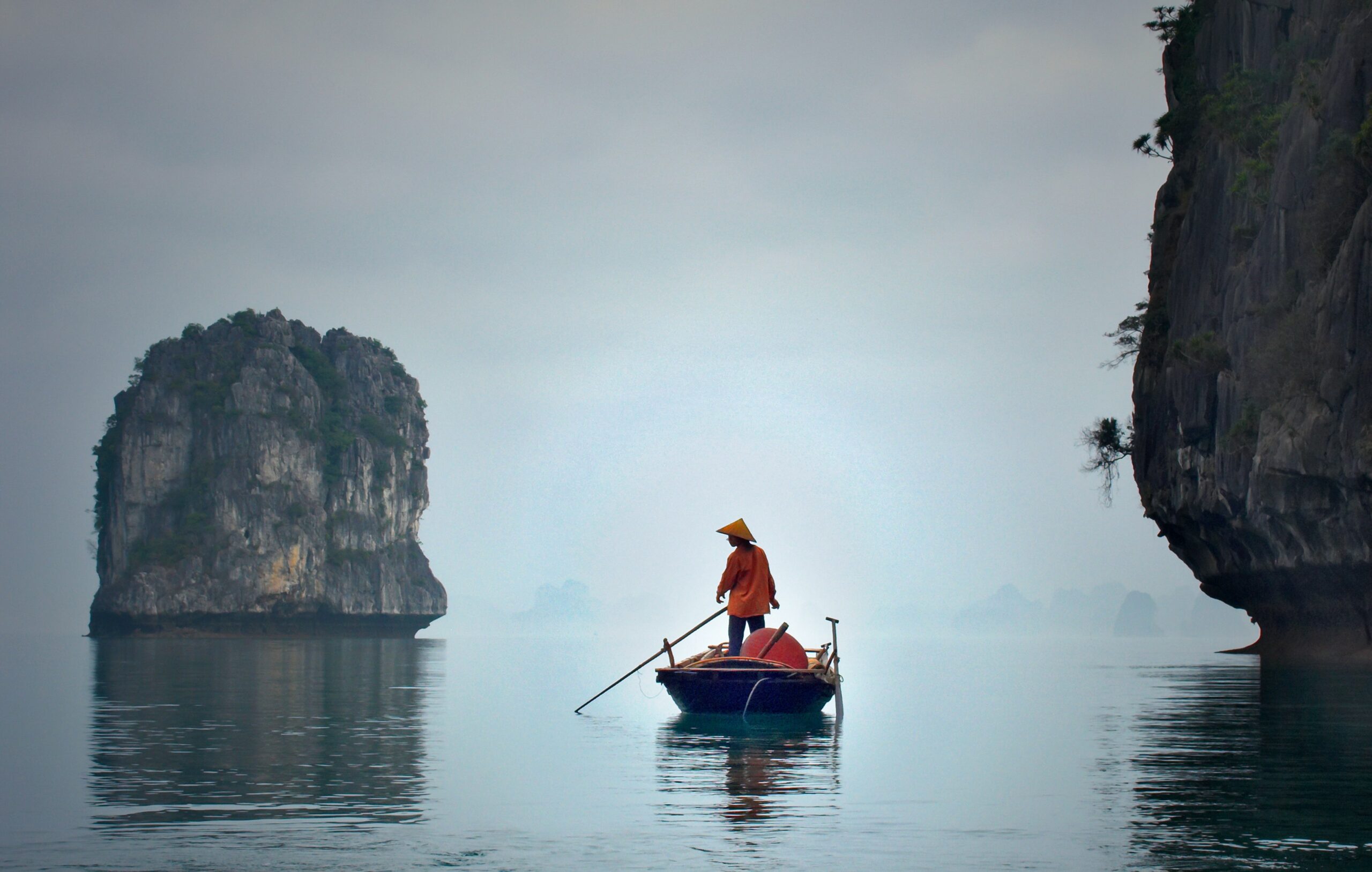Located in northeastern Vietnam, the UNESCO World Heritage Site of Halong Bay is home to over 1900 towering limestone islands and islets rising from deep emerald waters. Spread across 1500 sq km (589 sq miles) in the Gulf of Tonkin, from above, the islands resemble the undulating bodies of dragons – “Halong” means “descending dragon” in Vietnamese.
According to legend, the Jade Emperor sent the Mother Dragon and her offspring to aid the Vietnamese people in a battle against foreign invaders, and they have remained here ever since in the form of jungle-clad islands.
Today, Halong Bay is a must-see destination for its otherworldly beauty – it was the filming location for some scenes in the 2017-movie Kong: Skull Island – with caves, beaches and range of outdoor activities, all just a few hours from Hanoi.
When should I go to Halong?
Halong’s scenery changes with the season and there is beauty to be found practically year-round. There are two main seasons: winter from November to March with average temperatures ranging from 15–20ºC (59–68ºF) and summer from May to September with balmy temperatures from 25–30ºC (77–86ºF). June to August are the wettest months.
For adventurers, summer is ideal for water sports, including kayaking and swimming. The colorful Carnaval Ha Long is also held at the end of April/early May. However, photographers might prefer visiting in winter, as early mornings regularly see misty conditions, creating eerie scenes of fog-shrouded islands in the distance.
How much time should I spend in Halong Bay?
Most travelers come to Halong Bay to cruise. For those pressed for time, there are half- and full-day trips that provide the briefest glimpse of the islands, although this makes for a very long day when you include traveling to and from Hanoi.
Most travelers will opt for an overnight cruise, with transport from Hanoi leaving early morning and embarkation at around noon, dropping visitors back to the pier at the same time the next day. Usual activities on an overnight cruise include touring a cave, visiting a beach or floating pearl farm, a cooking demonstration on board, and squid fishing at night. The packed itinerary can make the cruise feel rushed with very little time to simply sit, relax, and enjoy the incredible views. While this is the most popular option, the drawback is that most boats will travel along…
Click Here to Read the Full Original Article at Stories – Lonely Planet…
